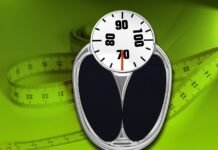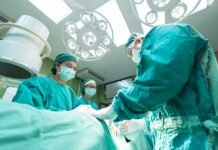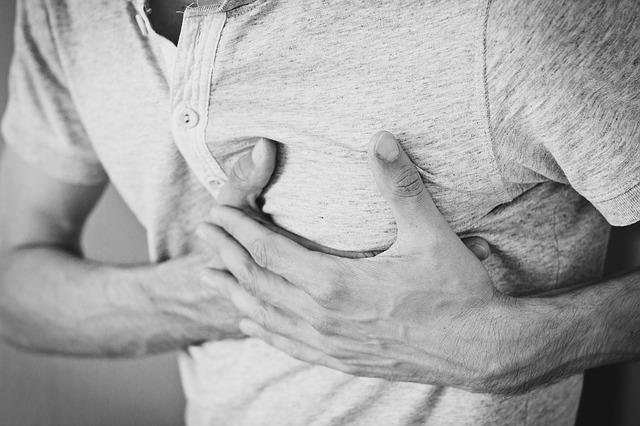A stroke can be a frightening experience. It’s vital to know the signs of a stroke and what to do if you or someone you know experiences one. Find out what a stroke is and the two different types, what signs to look out for and what treatment is available.
What Is a Stroke?
A stroke is a medical emergency. It occurs when the blood supply to the brain is interrupted, depriving the brain cells of oxygen and causing them to die. This can happen due to a blockage — such as a clot — or bleeding in the brain.
Strokes are unfortunately becoming more common. According to the World Health Organization (WHO), strokes are now the second leading cause of death globally.
There are two types of strokes: ischaemic and hemorrhagic.
Most strokes — around 87% — are ischaemic. These happen when a blood clot blocks blood flow to the brain. The other, less common type of stroke is haemorrhagic, which occurs when a blood vessel in the brain ruptures and bleeds.
There is a separate condition called a transient ischaemic attack (TIA), also known as a mini-stroke. The symptoms of a mini-stroke are the same as a full stroke, but they only last between a few minutes and a couple of hours before disappearing.
A transient ischaemic attack can be a scary experience, but the symptoms do improve, so you might be tempted to ignore them. However, a mini-stroke is still serious and a sign that there’s a problem with the blood supply to your brain. If you have suffered a TIA, there’s a higher chance you will have a stroke, so you should book an urgent appointment with your GP.
Who Is More at Risk of a Stroke and Can It Be Prevented?
While strokes can happen to anyone at any age, some factors increase the likelihood of a stroke. These include high blood pressure, diabetes, smoking, obesity and a history of strokes or heart attacks.
While there is nothing you can do to completely prevent having a stroke, you can make lifestyle changes to reduce your risk. Eating a healthy diet, exercising regularly, not smoking — or quitting if you do — and maintaining a healthy weight all help lower your risk.
The Signs of a Stroke
The three main signs of a stroke and what you should do if you recognize them can be easily memorized with the F.A.S.T acronym:
Face: Is their face drooping on one side?
Arms: Can they raise both arms over their head? Sudden weakness or paralysis in the arm (usually on one side of the body) can prevent a person from being able to raise both arms and keep them there.
Speech: Is their speech slurred, or can they not talk at all?
Time: If you see any of these signs, you should call for an ambulance immediately.
In addition to these signs, a person having a stroke may experience:
- Difficulty seeing in one or both eyes due to blurry or lost vision
- Dizziness and confusion
- A severe headache that comes on suddenly
- Difficulty swallowing.
Immediate Treatment for a Stroke
If you or someone you know experiences a stroke, you should get them to the hospital immediately. If the stroke is ischaemic (caused by a blood clot) and it happened within the last four hours, a doctor will administer a clot-busting medication in an injection to restore blood flow to the brain. This procedure is known as thrombolysis.
If the ischaemic stroke is more severe and caused by a blood clot in a large artery, you may need a surgical procedure called a thrombectomy. This involves inserting a catheter into an artery, through which a small device is passed into the brain to remove the clot.
For hemorrhagic strokes, immediate treatment is needed to stop the bleeding and reduce the pressure on the brain. This treatment may include surgery to repair the damaged blood vessel or remove any clots that have formed.
Long-Term Rehabilitation
Immediate treatment after a stroke is only the first step in what can be a lengthy recovery. After a stroke, you may need physical therapy to build balance and coordination, occupational therapy to learn new ways to complete tasks to support your independence, and speech therapy to strengthen your facial muscles and communicate with others.
How long it takes to recover after a stroke depends on several factors, including how much damage the stroke has caused and how early it was identified. Still, some individuals will see rapid improvements in months, while others may need treatment for years and still have minor impairments.
Once you’ve had a stroke, you’re also at risk of having another one in the future. One of the key parts of stroke rehabilitation is identifying and treating the underlying causes of the stroke, which can include high blood pressure or cholesterol and heart disease.
If you have had either a full or mini-stroke or you’re at risk of having one, it’s vital to follow the advice of your medical professional. This means taking any prescribed medicine to lower your blood pressure or cholesterol or taking preventive measures such as eating well, exercising regularly, and watching your alcohol intake. You should follow the recommended guidelines on this: you shouldn’t drink more than 14 units a week (around six pints of beer or medium glasses of wine), spread across three or more days.
When it comes to stroke recovery in the UK, you have several options. Services are available on the NHS, but you might choose to go private. If you opt for private stroke rehabilitation, you’ll benefit from personalized attention and a tailored plan designed to maximize your chances of a successful recovery.
If you or someone you know has experienced a stroke, you shouldn’t hesitate to seek medical help. The time required for rehabilitation varies from person to person and is often a long process, but with proper treatment and support, recovery is possible.























